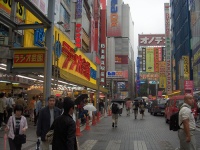 Getting Around TokyoTokyo''s public transport system is one of the most efficient in
the world and is clean and safe, combining an extensive train
network, 13 underground subway lines and a bus system. Visitors
usually find the trains (JR) and subways the best way to get around
although the complexity of the underground network can be
intimidating; rush hour from 7:30am to 9am and 5pm to 7pm should be
avoided. Most stations have English signs. Because lines are owned
by different companies, transfers between trains or subways usually
require a transfer between different train systems, with different
ticketing systems that can be confusing. The Tokyo Combination
Ticket (Tokyo Free Kippu) is a day travel pass that allows
unlimited use of the trains, subway and bus lines within the city.
Subway tickets are bought at vending machines; buy the cheapest
ticket if unsure how much to pay and the difference, if any, can be
paid at the end of the journey. The bus system is more complicated
for visitors as most destinations are written in Japanese only and
bus drivers don''t speak English. Taxis are convenient but never
cheap, particularly in rush hour. Taxis can be hailed on the
street, except in some central areas, where they only pick up from
taxi ranks. Drivers speak little English so it is a good idea to
have the destination written out in Japanese. Driving a car in the
city is not advised. JR trains are free with a
. |